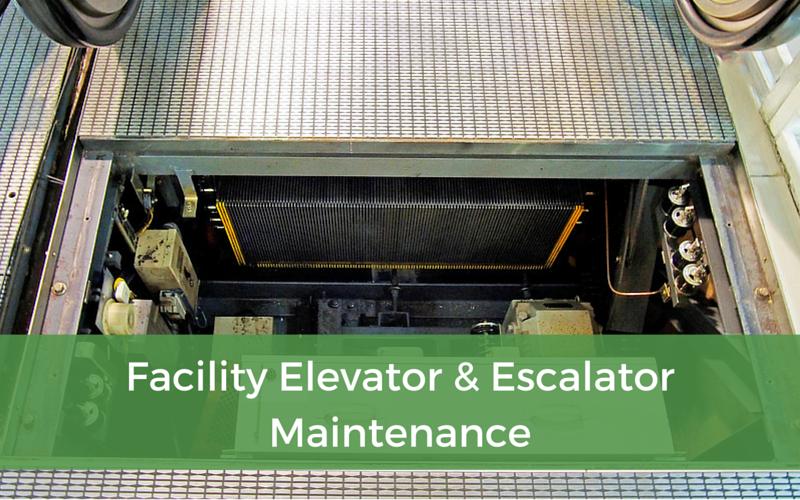
It’s important that those who enter your facility, whether staff, visitors or occupants, are able to move around easily and safely.
One way you can ensure this crucial managed service is up to par is to perform regular maintenance on your elevators and escalators.
Here’s why these transportation devices need to be checked regularly, their most common malfunctions, and how you can ensure they’re operating properly.
Why Maintenance is Important
Elevators
According to Consumerwatch, there are an estimated 900,000 elevators serving an average of 20,000 people who make 18 billion passenger trips per year in the U.S. “The vast majority of these elevators are located within commercial, retail, or residential properties with an average rise of 40 feet (4 to 5 floors).”
There are about 27 deaths on average per year, according to the U.S. Bureau of Labor Statistics and the Consumer Product Safety Commission (CPSC).
Escalators
Consumerwatch reports that there are an estimated 35,000 escalators serving 12,000 people that make 105 billion passenger trips per year. “The vast majority of these escalators are located within commercial, retail, and public buildings such as airports and hospitals.”
In a study of escalator deaths, the CPSC found that there was an average of two escalator-related deaths per year.
Although they are relatively safe, it is still incredibly important to perform regular maintenance on both elevators and escalators to keep these tragic numbers as low as possible.
Types of Malfunction
Elevators
Here are a few of the most common types of elevator malfunctions according to Consumerwatch:
- Open shaft or falls due to faulty doors or other failures
- Pulley system malfunction, or a mechanical breakdown or defect causing an elevator to fall
- Unbalanced leveling/failure of the elevator to line up with the floor
- Incomplete inspections, maintenance, or repairs by unqualified personnel
- Faulty wiring, risk of electrocution, and elevator control malfunction
- Entrapment or wiring malfunction due to heat from fire or water from emergency sprinklers or hoses
About 10,200 people a year suffer injuries from elevators, with most accidents related to passenger safety vulnerabilities, carriage misalignment with floors, and elevator door malfunction.
Escalators
As for escalators, some of the most common malfunctions include:
- Missing or loose screws
- Broken or missing steps
- Missing teeth on the escalator track
- General malfunction
- Excessive space between the moving walk area (the steps) and the escalator sides
3 Things to Keep in Mind
When it comes time to perform facility elevator and escalator maintenance, keep these three important aspects in mind.
1. Safety Standards
It’s important to ensure that older, existing elevators and escalators meet current safety standards.
For example, Consumerwatch found that “escalators designed and manufactured before 2002 do not likely meet the more stringent requirements for escalator skirt safety that were enacted through the revised ASME Safety Code for Elevators and Escalators that year.”
2. Licensing Requirements
You also need to make sure that all elevator and escalator technicians have met stringent licensing requirements. As we noted above, some of the most common elevator malfunctions are due to incomplete repairs, maintenance or inspections conducted by unqualified personnel.
3. Local and State Laws
Last but not least, facility managers need to abide by local and state laws that can vary greatly by location. If you input “elevator safety law” and your state into a Google search, you’ll be able to find local and state regulations.



